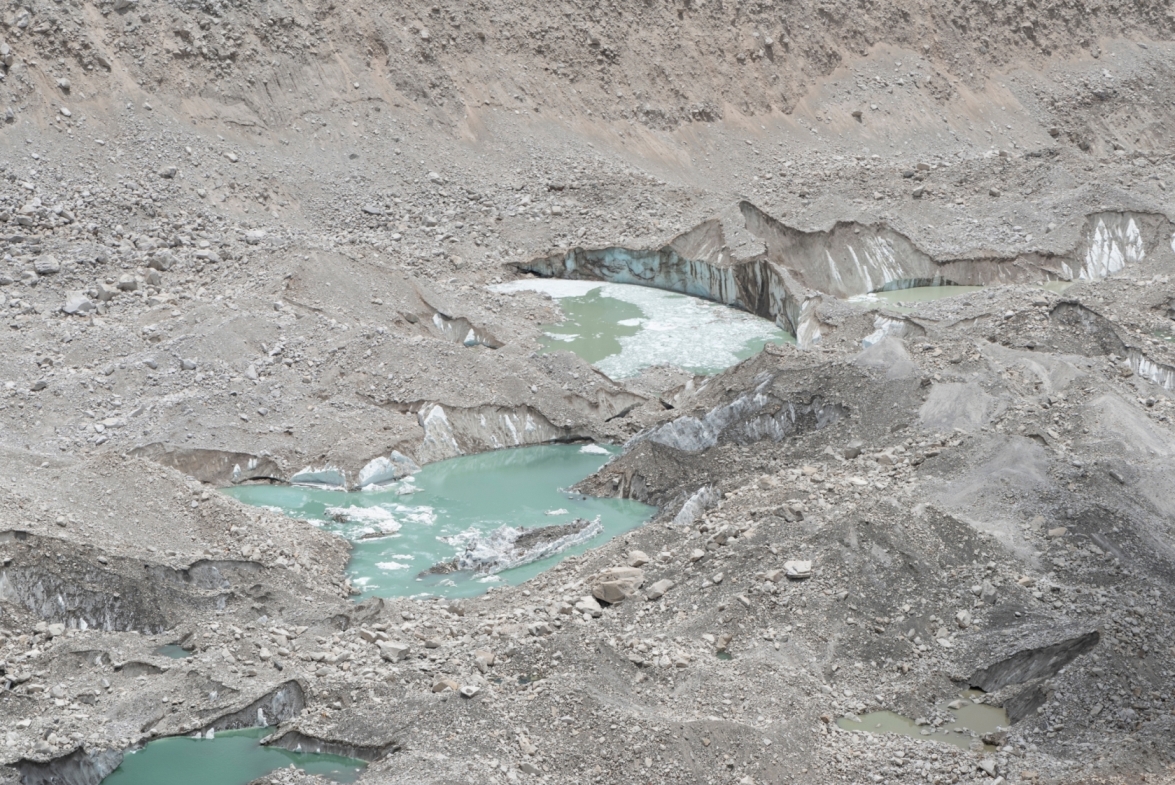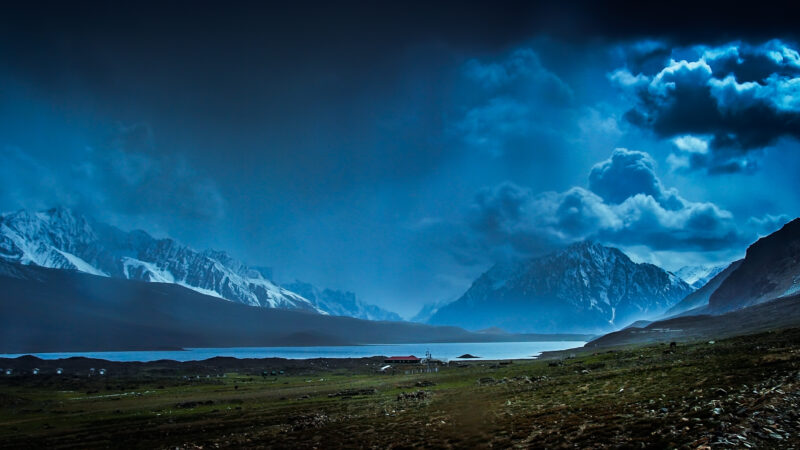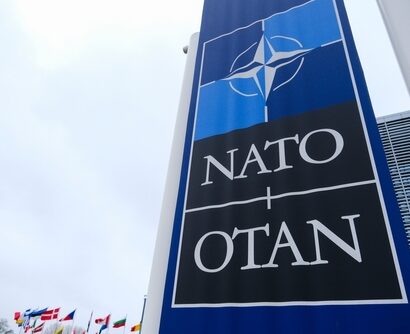Abstract: Home to some of the largest river basins of the Asian continent, the Hindu Kush Himalayan region (HKH) has been called the “Water Tower of Asia” for the vast quantity of freshwater resources it provides. The ten major river systems originating from the region are crucial to the needs of over 1.9 billion Asians, 24% of the world’s population. While their importance cannot be understated, a majority of the rivers flowing across nations necessitate their division among the countries they traverse. This factor has historically caused widespread international conflict in the region and continues to do so. The disputes over shared waters resulted in water insecurity in some nations, and the devastating impact of climate change on the region raises doubts about the future of water sufficiency in the region. These dangers can only be combated through improved regional cooperation over transboundary rivers. The HKH nations must learn from the experiences of the Middle East, a region similar to itself, to bettering riparian relations. The most pressing takeaway is to stave off framing grand, all-comprehensive agreements and formulate treaties consisting of modest targets and ambitions.
Problem statement: What is the general status of riparian relations in the HKH region, and how does one attempt to better them?
Bottom-line-up-front: With many parts of the world battling water scarcity, and global warming threatening to reduce water availability further, the HKH region’s experiences could hold important lessons for the rest of the world. Suppose the region does exhibit greater regional cooperation over its watercourses. In that case, it could provide important takeaways for other states engaged in regional cooperation to fulfil national water needs as one of the policy paradigms that will develop in the face of greater water scarcity in the coming years.
So what?: With the region having been witness to conflict over shared waters for a long time and continuing to be the same, the region’s nations must try and imbibe learnings from other regions of the world which have similarities to themselves. The ‘Middle East’ suits this purpose, and their experiments with water-sharing arrangements hold vital lessons for developing water cooperation in the HKH region.

Source: shutterstock.com/ Pav-Pro Photography Ltd
The Hindu Kush
The Hindu Kush Himalayan region (HKH) stretches to 3,500 sq. km and spans all or part of eight countries ranging from Afghanistan in the West to Myanmar in the East. The HKH region is one of the most crucial mountain systems worldwide[1]. The region is known for the incredible quantity of freshwater resources it possesses, in the form of a vast number of glaciers. It is home to ten massive river systems birthed from the glaciers, namely the Indus, Brahmaputra, Salween, Yangtze,Ganges, Irrawaddy, Mekong, Yellow, Amu darya and Tarim. These rivers are crucial to the needs of the south-Asian continent as it provides irrigation, power and drinking water to almost 1.9 billion, which is approximately more than 24% of the global population[2]. The international significance of these rivers cannot be understated, as most flow across several nations. Thus several countries are forced to share their waters to satisfy the individual water needs of their population. The compulsion to divide the waters was responsible for causing numerous international conflicts in the HKH region and continues to essay this unfortunate role. With the disputes already having jeopardised access of some nations to their waters, the scenario is much bleaker for the region when considering the devastating impact of climate change on this part of the world, which threatens to compromise the water security of the region as a whole.
The region is known for the incredible quantity of freshwater resources it possesses, in the form of a vast number of glaciers. It is home to ten massive river systems birthed from the glaciers, namely the Indus, Brahmaputra, Salween, Yangtze,Ganges, Irrawaddy, Mekong, Yellow, Amu darya and Tarim.
The interplay of factors places the HKH region at a rare intersection of ecology and geopolitics since the world does not often witness such widespread international conflict over ecological factors. The combination of the above elements may lead to dreadful consequences for the water sufficiency of the region while also threatening a devastating escalation of the conflicts. These reasons compel a study of the HKH region to analyse the conditions that make it prone to conflict over water and to gauge the impact of increased global warming on the region
International Conflicts in the HKH Region
Indo-Bangladesh Conflict
Despite the otherwise friendly relations of the neighbouring countries, the issue of sharing common waters has stirred conflict between the two. Water-sharing is a crucial diplomatic aspect of Indo-Bangladesh relations, with the two riparians sharing 54 transboundary rivers between them[3]. Among them, notable conflicts emerged early on over sharing the Ganges and the Teesta. This article focuses on the latter as there have been more recent developments in this dispute, boosting the relevance of such a study. The Teesta, a tributary of the Brahmaputra, originates in the Himalayas and flows through the Indian states of Sikkim and West Bengal before draining into Bangladesh[4]. The river has been engulfed in conflict since 1947, when the Teesta’s catchment area was allotted to India[5]. In the following years, attempts have been made to divide the rivers’ waters equitably. Still, these have fallen through due to internal opposition from India, particularly from the state of West Bengal.
Water-sharing is a crucial diplomatic aspect of Indo-Bangladesh relations, with the two riparians sharing 54 transboundary rivers between them.
India has consistently refrained from addressing Bangladesh’s long-standing demand to share the Teesta’s waters equitably[6]. The dispute remains unresolved, with no agreement in place to fairly distribute the river’s water, and continual dam building along the river in Sikkim has further restricted the river’s seasonal flow towards Bangladesh[7]. Unfortunately, Bangladesh is the lower riparian to almost all the rivers it shares with India; India’s intransigence and the undue benefits it has reaped off its upper riparian position only augment the concerns Bangladesh must already hold by way of being a downstream neighbour. The dispute is an example of the tensions between HKH nations over-sharing waters. It is also demonstrative of the unequal power held by upper riparian countries over the flow of a river, a dynamic of central importance in most disputes between riparians.
Indo-Pakistan Conflict
While multiple conflicts emerged between the two nations over shared waters, the “Tulbul project” dispute is an example of intense rivalry between countries over shared waters, with the construction of a barrage on a transboundary river causing tensions that lasted for decades.
The Tulbul project involved the construction of a barrage at the mouth of Wular lake in India to ensure year-round navigation. Wular lake, situated on the Jhelum River, is one of the largest freshwater lakes in India. The lake is crucial for transporting and moving goods and people in the Jammu and Kashmir (J&K) region. However, during winters, the reduced depth of the lake renders a crucial 22-km stretch between Sopore and Baramulla non-navigable, making moving on the lake extremely difficult[8]. To solve this problem, India began constructing a barrage in 1984 to guarantee year-round flow into the lake to maintain its required depth.
Wular lake, situated on the Jhelum River, is one of the largest freshwater lakes in India. The lake is crucial for transporting and moving goods and people in the Jammu and Kashmir region.
However, within three years, the construction had to be stopped under opposition from Pakistan. The nation argued that the building of this barrage would place India in violation of the Indus Waters Treaty (IWT) (1960), a landmark agreement between the nations to divide the rivers of the Indus river basin among them[9]. While the IWT reserved the rights to exclusive use of three rivers each to the two countries, they were also granted the right to restrict the rivers reserved for the other nation for domestic and agricultural use. The nations were also allowed to build ‘run-of-the-river’ hydropower projects which use the force of flowing water to generate energy without any provision for storage or diversion of the river’s waters. Based on these provisions, India affirmed that it had not violated the IWT, as the Tulbul project did not have any feature to store or divert the waters of the Jhelum.[10] With the intense contestations to the project, the construction was not allowed to resume then. The work on the project stopped and started on several occasions as the countries could not resolve the issue comprehensively. The latest talks to discuss the project were held in 2011.[11]
The objective of surveying this dispute was not to determine which nation was right in this conflict but to showcase how aggressively shared waters are contested, that even seemingly benign projects could end up stalled for decades. It is important to note that more water-related conflicts emerged in Indo-Pakistan and Indo-Bangladesh relations and that multiple other countries in the region, like Nepal, China, and Myanmar, are also embroiled in several disputes over shared waters. This profusion of conflict indicates how widespread these dissensions are throughout the HKH region, with the involvement of a large percentage of the region’s nations in them indicating how tricky it can be to navigate these water-sharing arrangements.
Impact of Climate Change on the Hindu Kush Himalayan Region

Source: shutterstock.com/Ganga Raj Sunuwar
Through the disputes of the HKH region mentioned above, one might gain a brief insight into the kind of tensions between the region’s nations over shared waters. While these conflicts threaten to affect the water sufficiency of some countries, the region faces a more significant threat from the phenomenon of climate change, which could endanger the water security of the whole region. Banerjee et al. (2021) found that increased global warming is depleting the water storage of the region’s large basins, potentially causing a disastrous impact on the many millions dependent on them.[12] In a study aimed at assessing the impact of temperature rise on 31 major river basins of the world, with many of those partly or fully spread across the HKH region, the researchers found out that with each degree rise in temperature, the water recharge of some of the river basins of the HKH region displayed a significant decline. The water recharge of the Irrawaddy basin declined by 39%, the Indus basin declined by 24%, the Mekong basin declined by 15%, and the Ganga-Brahmaputra basin declined by 14%.[13]
‘Water recharge’ refers to the amount of water that flows into the different catchment areas of these basins, like rivers, groundwater and soil moisture.[14] The declines in their respective recharge levels threaten the devastating consequences for a considerable portion of the Asian population. The region also experiences a faster rate of warming than the global average, as highlighted in a 2019 report by the International Centre for Integrated Mountain Development (ICIMOD) — a regional intergovernmental body. The report claimed that even if warming in the future were limited to 1.5 degrees Celsius, warming in the HKH region would likely still be 0.3 degrees Celsius higher, potentially triggering a multitude of damaging effects like loss of biodiversity, heightened melting of glaciers, and greater unpredictability in water availability, wreaking havoc on millions.[15]
Even if warming in the future were limited to 1.5 degrees Celsius, warming in the HKH region would likely still be 0.3 degrees Celsius higher, potentially triggering a multitude of damaging effects.
This combined impact of increased global warming and the region’s many water-related conflicts can prove highly damaging to the region. While climate change has brought the international community together and must be tackled on a global scale, the nations of the HKH region must strive to find solutions to the problem of frequent and long-running disputes over water the region is facing. The below measures can prove to be helpful in this vein.
Measures to Improve Water-Cooperation in the Region
There are two directions the nations of the HKH region can look in for this purpose:
a) International Law; and
b) Experiences of similar regions.
When attempting to evolve solutions for the region through the doctrine of International Law, the most relevant document is a UN Convention titled “The Law of Non-navigational Uses of International Watercourses”, adopted on May 21, 1997. This convention was an attempt to codify and document all the basic rules that governed the non-navigational uses of international watercourses in one place. It serves as a guiding document with general principles that shape fair and equitable agreements between nations over the uses of international watercourses.
While the document works well when used as a guiding document, some glaring flaws in the convention limit its effectiveness. The convention enshrined its guiding principles as ‘Articles’. Some key terms in the articles have been left undefined in this document, which can create severe misunderstandings between nations. The two critical articles worth mentioning in this regard are:
➔ States to exercise “equitable and reasonable use of international watercourses within their territories” (Article 5); and
➔ States to not cause “significant harm” to other states in the same river basin (Article 7).”[16]
The convention does not define the terms “equitable and reasonable” or “significant harm”.[17] It is apparent that not defining the terms and letting nations interpret them per their wishes can prove detrimental to some countries, as one country’s “equitable and reasonable” might be exploitative of another. The same is the case with “significant harm”. While these might seem like minor aberrations, these problems with the convention can cause enormous difficulties in fleshing out treaties between riparian nations which are fair and help achieve the objectives of both/ all parties involved.
It is apparent that not defining the terms and letting nations interpret them per their wishes can prove detrimental to some countries, as one country’s “equitable and reasonable” might be exploitative of another.
With the path of International Law having some evident limitations, it is paramount to investigate other solutions for this purpose. Wirsing et al. (2013) extensively researched the issues faced by this region’s over-sharing of waters in their book “International Conflict over Water Resources in Himalayan Asia”. Based on their investigations, the authors suggested that the HKH region must learn from the experiences of similar regions. The Middle East is a region which suits this purpose. The region is home to large river basins spread across nations. It has other essential features that liken it to the HKH region, such as a similar past of an intense rivalry over shared waters and a legacy of colonial influences.[18]
Wirsing et al. (2013), based on the Middle East’s experiences, find that the most important learning for the HKH region would occur in how the HKH region must frame agreements between riparian nations. The Middle Eastern region often met with failure when nations attempted to be overly ambitious and formulated agreements of a scope that was too large for them. These failures drive the authors’ recommendation to the HKH nations – they can hope to better the state of water cooperation in the region by formulating treaties and agreements that are definite and limited in their scope and modest in their targets.[19] By staving off the urge to flesh out all-comprehensive arrangements and by framing ones that set out achievable targets and ambitions, the HKH nations should recognise that the path to a future where they can fulfil the water needs of nations through regional cooperation, as also develop their precious watercourses, can only be accessed one step at a time.
Conclusion
The study of the HKH region—although intriguing as it presents a part of the world where the environmental aspects are hotly contested between nations—bears projections of a challenging future. The region is riddled with international disputes over rights to shared waters, which, while already restricting nations’ access to rivers that flow through their territories, blocked the crucial prospect of collaborative development of the watercourses. The Asian continent is by far the most populous in the world, and many of its peoples’ lives are directly dependent on the HKH rivers. With the region also fighting the debilitating impact of climate change, tens of millions residing on the continent can be starved of an adequate water supply if no immediate steps are taken to improve the way shared waters are used between the nations. The HKH nations must, thus, come together and scour for the best possible solution to try and enhance riparian relations across the region.
With the region also fighting the debilitating impact of climate change, tens of millions residing on the continent can be starved of an adequate water supply if no immediate steps are taken to improve the way shared waters are used between the nations.
One way the HKH nations can look is in the direction of the Middle East region, which has not only experienced similar troubles over shared waters but has other similarities which make its experiences most relevant for the HKH nations. The most important learning from the Middle East, as has been highlighted above, is to develop the understanding among nations that the solutions will not arrive through grand, all-comprehensive international agreements. Only through modest and cautiously ambitious treaties can the proper steps be put forward by nations, allowing them to ascend on the gradual path to a future where there is cooperative fulfilment of every nation’s water needs, as well as collaborative development of these precious watercourses.
Twinkle Dev, Research Associate, The Energy & Resources Institute; Jay Hajare, Student, National Law School of India University; Public Policy, Environment and Waste Management, Circular and Blue Economy; Academic Fields: Sustainability, Environment and Climate Change; Earlier publications: INOPOL (2021) of Baseline Report – Plastic Pollution in India. India-Norway Cooperation Project on Capacity Building for Reducing Plastic and Chemical Pollution in India. T E R I.; 2019 Used Beverage Carton Management Study for Indian Cities New Delhi: The Energy and Resources Institute. 134 pp.; Dev T., and Pandey S., 2021. Independent Assessment of Mechanized Road Sweeping operations in East Delhi Municipal Corporation Area. New Delhi; The Energy and Resources Institute. TERI Energy and Environment data Diary and Yearbook (TEDDY) 2020-2021. The views contained in this article are the author’s alone and do not represent the views of TERI.
[1] “The Hindu Kush Himalayan region,” Grid Arendal, accessed April 01, 2022, https://www.grida.no/resources/12806.
[2] “The Third Pole is a multilingual platform…,” The Third Pole, accessed March 29, 2022, https://www.thethirdpole.net/en/about/.
[3] Jaya Thakur, “India-Bangladesh Trans-Boundary River Management: Understanding the Tipaimukh Dam Controversy,” ORF Issue Brief No. 334, January 2020, Observer Research Foundation.
[4] Anuttama Banerji, “India Must Settle The Teesta River Dispute With Bangladesh For Lasting Gains,” The Diplomat, April 09, 2021, https://thediplomat.com/2021/04/india-must-settle-the-teesta-river-dispute-with-bangladesh-for-lasting-gains/.
[5] Idem.
[6] Idem.
[7] Idem.
[8] Priyanka Mallick, “Tulbul: The Politics of Water between India and Pakistan,” Institute of Peace and Conflict Studies, June 30, 2006, http://www.ipcs.org/focusthemsel.php?articleNo=2055.
[9] Idem.
[10] Idem.
[11] Gargi Parsai, “India, Pakistan resume talks on Tulbul project,” The Hindu, May 11, 2011, https://www.thehindu.com/news/national//article60557037.ece.
[12] Deepa Padmanabhan, “ Water levels in Himalayan river basins drop as world warms,” The Third Pole, January 26, 2021, https://www.thethirdpole.net/en/climate/water-levels-in-himalayan-river-basins-drop-as-world-warms/.
[13] Idem.
[14] Idem.
[15] Richard Mahapatra, “ Himalayan meltdown: Hindu Kush Himalayan region warming faster than global average,” February 04, 2019, https://www.downtoearth.org.in/news/climate-change/himalayan-meltdown-hindu-kush-himalayan-region-warming-faster-than-global-average-63078.
[16] Daniel C. Stoll, Christopher Jasparro and Robert G. Wirsing, International Conflict over Water Resources in Himalayan Asia (Palgrave Macmillan, 2013), 137.
[17] Ibid., 136.
[18] Ibid., 170.
[19] Ibid., 171.






